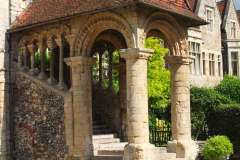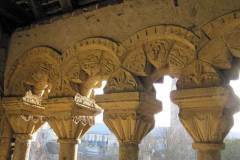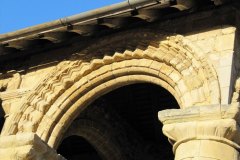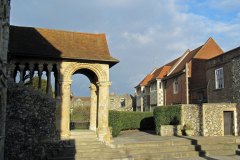This must be the most photographed of all the precincts features. Built around 1160, in the time of Prior Wibert, it can reasonably claim to be the best preserved Norman starcase in England. It originally gave access to the High Hall (also known as the Aula Nova, North Hall, or Hog Hall), a guest house for pilgrim visitors. When much of the Hall was demolished in the 18th century, and more in the early 19th, the staircase amazingly survived. New school rooms were constructed over the arches in the 1850s. Many of the stair’s features have direct parallels in Wibert’s water tower.
Just beyond the staircase, the hedged garden provides the resting place for the ashes of Somerset Maugham.
What to see:
- a large projecting Norman staircase (Image 1)
- elaborate dogtooth and chevron features inside (Image 2) and out (Image 3)
- beyond the staircase, the resting place for the ashes of Somerset Maugham (Image 4)
Sources: Hill (1986); Kahn (1991); Sparks (2007); Woodman (1980)
DL




